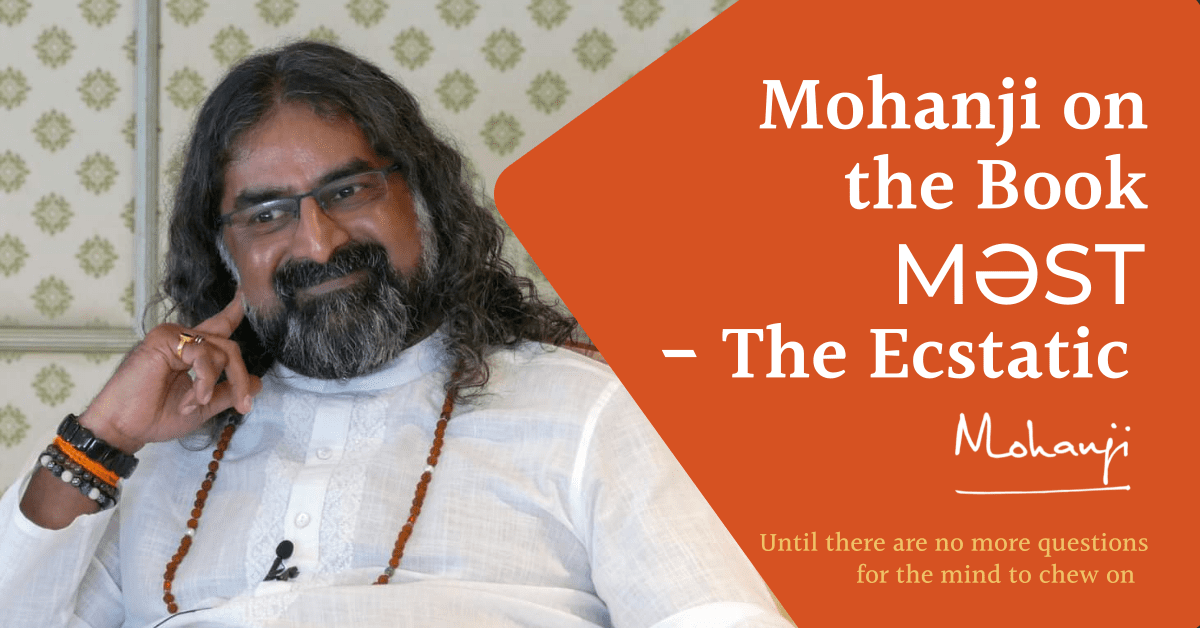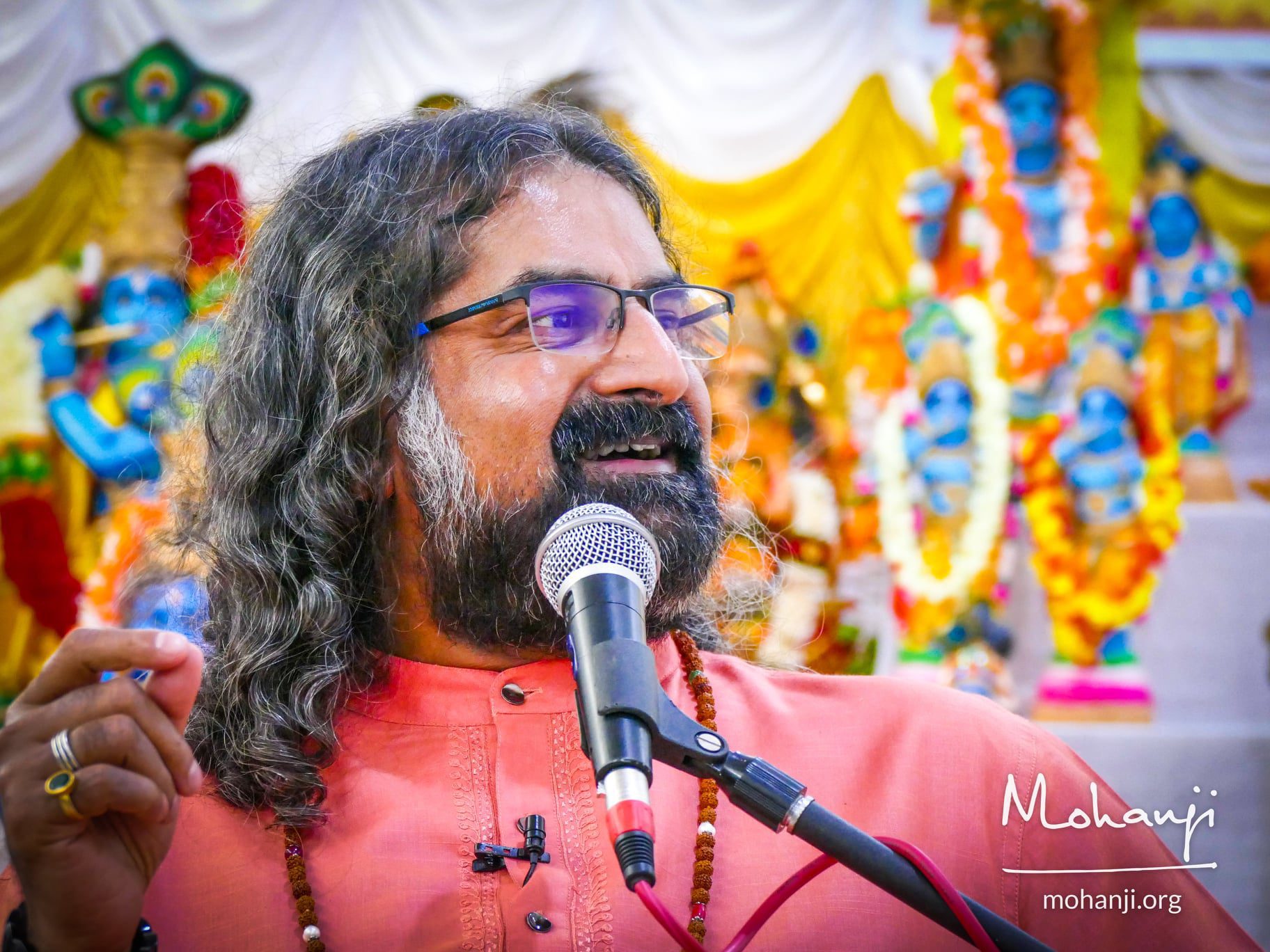
Mohanji’s Interview with Harendra Singh Jodha on Midlands Asian Television (MATV National) about the book MƏST and the state of accomplished masters
The Book Məst
Question 1: How did you get the idea to write a book like MƏST – The Ecstatic? What was the thought behind it?
Mohanji: Thank you, Mr. Jodha, for inviting me! It is really a pleasure to be with you here on this program on MA TV.
When you started, you spoke about Adi Shankara and Bhaja Govindam, which literally brought me a state of stability and stillness. Adi Shankara is a real inspiration for me. At the age of 8, he said
“Mano buddhi ahankara chittani naaham
No cha shrotravjihve na cha ghraana netre
I am not the body, mind, ego intellect, spirit- I am eternal Shiva”.
So, from that level of perfection, an Avatar happened, and he took us through various things such as Bhaja Govindam. Bhaja Govindam is really a mirror on the face of people.
Now, coming to your question on how MƏST – The Ecstatic happened.
MƏST is a state of ecstasy, ‘DRUNK WITH GOD’! You are ecstatic because you are drunk with God, with Supreme Consciousness, and that is our actual state, but why are we not experiencing that state? It is because we are chasing things outside. We equate pleasures with happiness, such as eating, drinking, sleeping, and gains from the world outside like positions, possessions, and relations. We think of these as pleasure and happiness or normal. Actually, it is not true.

When we go deeper and deeper within and connect with ourselves, we arrive at a state when we realise that all these facades, including our three states in a day, namely, waking, dream, and deep sleep, are all just dimensions of existence. But there is One Unity, One Union, One Consciousness, which is above everything and also guiding and aiding everything. When we connect to that, we go into an ecstatic space, and we realise that we can have happiness without the exterior, without possessions, positions, and relations. That makes us free, and that is the state of a MƏST – The Ecstatic .
MƏST is an Urdu word which means a person who is in deep ecstasy! How this came along is, when I was practicing very deeply, in the early 2000s, I arrived at a place where I was not dependent on the things outside; actually, many of the things I was dependent on broke off or went away and still, I could feel that I lost nothing. Then, I realised that what you can actually lose are only relative losses, which means you lose what you gain from here, and then you cry! All these possessions, positions, and relations are gained in this time. But there is something that is always with you, which is unchangeable, and that gives you absolute peace. In fact, it is peace itself! So that’s the thought that came to me – a person, a character, who is completely at peace with himself, and in that way ecstatic!
Then I started writing blogs about a character called Atmananda, who is established in peace and very much in tune with the world of duality, which means he is not in conflict with anything; neither happiness nor sorrow, he is not resisting anything; there is total acceptance of life as it is and he is well settled inside. The right place to settle down is inside us. So, he is fully settled inside, and he is in a state of ecstasy. That is what MƏST – The Ecstatic is about.

How to achieve the state of MƏST, the ecstatic in contemporary life
Question 2: People would really like to know how they can achieve the state of MƏST. You know it’s very difficult as out of 24 hours they spend 10 to12 hours in the office, maybe 5 to 6 hours with the family. In that time, possibly, they talk about mainly three things – power, possessions, and relations. MƏST is a state. I know it is total acceptance, but still, people are not ready to accept that total acceptance is possible!
So, my next question is based on the first part – I know this is a story of Atmananda and starts with Vamadeva and begins with the quest.
The question is that from the beginning of civilization, prayers are an important part; prayers are more to connect with the superpower, supreme power, or maybe the power that lies in us. We pray in temples, churches, mosques, and other places. Do you really feel that when we pray, there is someone who is listening to our prayers, who is responding to our prayers?
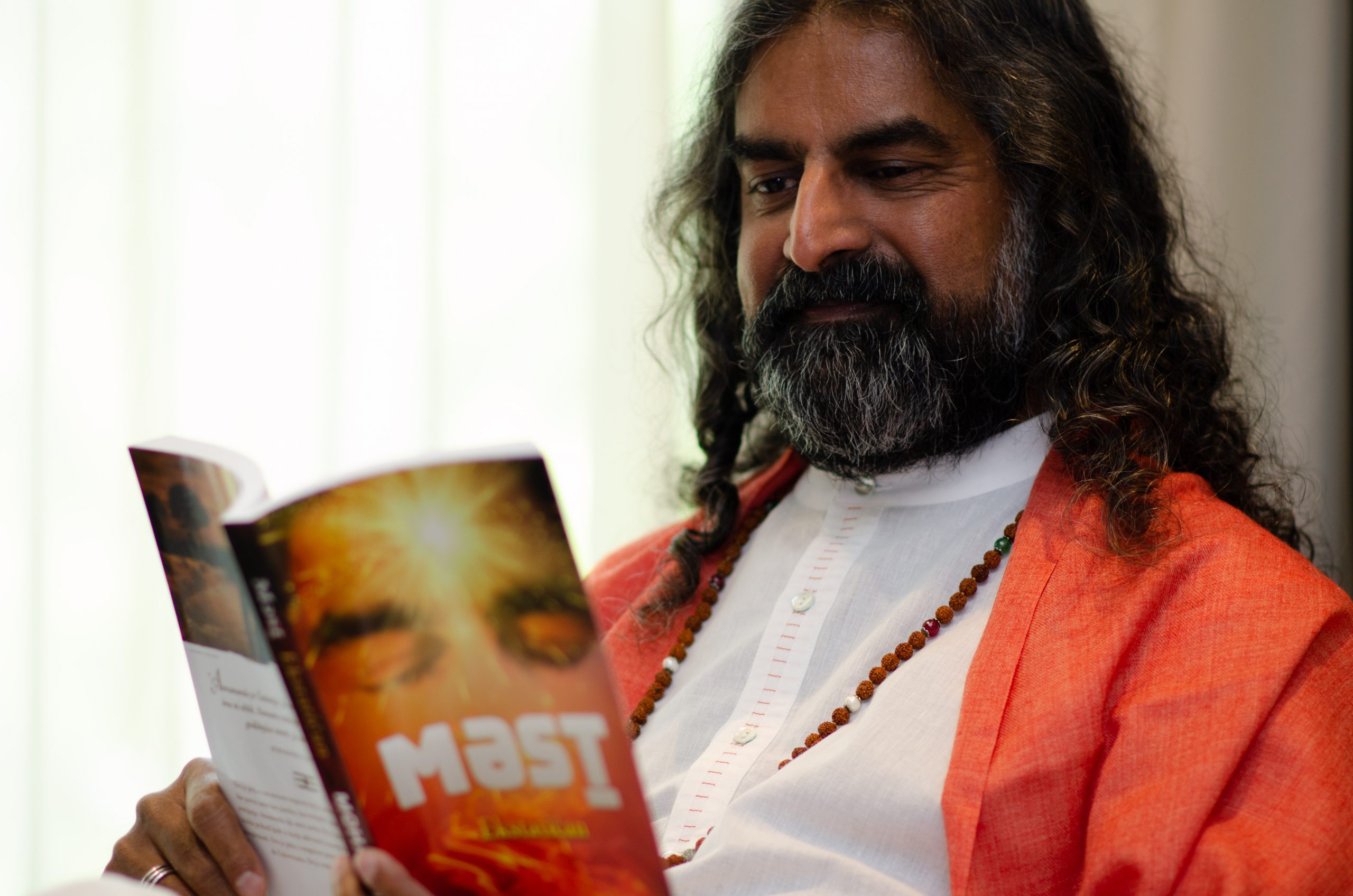
Mohanji: YES. Since you talked about the first part, this first part of our life is very important; this is exactly how we are positioning our life for the future. You know today, as you rightly asked, how do we accept everything that comes our way? That is a question because we have a concept before we start accepting. We have an expectation before we start accepting. That’s why many times we are in conflict with what we have.
In this book, I am talking about four aspects of human existence from the eyes of an Avadhoota, a person who is completely detached from the world.

Who is an Avadhoota?
Question 3: What does Avadhoota mean?
Mohanji: An Avadootha is one who is in a completely settled state inside; when your mind, intellect, and ego are totally dissolved into Consciousness, the energy that is inside us.
All of us have an energy aspect inside us which is completely silent, just like electricity. When electricity is operating through a light bulb, it brings light. When the same electricity is operating through a washing machine, it has a different effect and when operating through a refrigerator gives a different effect. Similarly, the energy that operates through a human body gives the experience of a human being. When operating through a tiger, it gives the effect of a tiger. So, it is not the form but the energy inside us that is activating everything on earth and everywhere else, from birth to death and beyond.
Someone who connects and surrenders to that electricity within detaches from the seeming facades of life (I spoke about the positions, possessions, and relations), which are very attractive and also binding during our waking state. We have our desires and inclinations connected to these things, so when a person who is totally connected inside and fully aware and realized of what’s running the show; who is in a state where he is fully settled inside, he can never be swayed by anything outside. That is a state of an Avadhoota, a well-established personality, a person who is fully settled inside; he doesn’t need practices, he doesn’t have methods or patterns or anything; they are all dissolved.
A state of accomplishment – that is an Avadhoota!
In the story of Atmananda, who was the only son of his parents, by the time he was 8 years old, he decided that he would go to this particular Guru only, and the Guru lived far away from his place. It would take many weeks of travel to reach Benaras. But he decided that he was the only Guru he would accept as his teacher. His father and mother and everybody else said, “You know it’s very difficult; we won’t be able to see you.” But his firm decision to be with that Guru brought him results.
There was hardly any interaction between the Guru and the disciples; there was hardly anything the Guru taught the disciples. In fact, the Guru just allowed the disciple to be himself and enabled the mind, intellect, ego that were scattered outside in the world to be collected and brought inside and melted inside. When this disciple was reasonably aligned, the Guru transferred himself to him. That means when the wood was dry, all that was needed was a spark from the Master, and the disciple caught the fire!
That simple was our education system! We had a great education system in India, which was unique in the world! I wanted to touch upon that subject, because we are learning so many subjects basically, to earn a living, while we hardly learn about ourselves; we don’t connect to ourselves at all; that’s why we have many emotions, many distractions; all these are because we are hardly connecting with ourselves.

Stages in life
In the first stage of brahmacharya, he was spending time with the Guru in the Gurukul in Benaras. All that he did was assimilate himself, and the Guru made him a perfect being.
Then the Guru said, now you have to take care of your Father and Mother. It’s a responsibility. Here, Dharma comes to play. He went to his parents. Here you see the maturity of the parents; they were very happy that a great Master took birth in their family. They were ecstatic about it. They knew very well that even if he was the only son, he would not stay with the family. They blessed him, and that is the second part. That, in our life, is the Grihastha stage, where after learning, we start making a living and have a family and possessions.
In the second part, he spent some time with family, and then he went wandering; that is, Vanaprastha, the third step. Here, whatever he had learnt, whatever he earned or knew, had to be distributed. So, he went around various places; he never stayed in one place. He spent his whole life wandering, and he never spent more than three days in one place. He gave discourses at various places, People came, and many could explore various dimensions within.
Then comes the last stage of sanyas; the time before he died, and he died at the age of 49. In the last stage he was in relative silence; he didn’t talk much, but with a glance or a look, he conveyed the message.
The flow of the story is that of a reasonably stable seeker, established in himself and going through life with conviction, connection, and deep stability. He was liberated even before he started his Grihastha time; in other words, even as he came out of the Gurukul! Liberated means he was disconnected from the world outside. He had no requirements from the outside world except for basic survival. Apart from that, he was not dependent on the pleasures that we derive out of materials, relations, and such. He was a very stable person, led a very stable life, fully occupied in activities which are liberating in nature, liberating people around him. That is the story of the book, and various incidents connected to it are conveyed.

Feelings Behind Spontaneous Action
Question 4: Is action important, or the feeling behind the action that is important? Sometimes we do our actions and Karma; we perform our duty and finish it. Is that important, or the feeling behind that Karma or action important?
Mohanji: I would say spontaneous action is essential; when we have doership, in other words, when we think we are doing something, then it loses some purity. An action happening spontaneously gives that perfection, and especially when we are not attached to the results of the action, it is very, very pure. If we consider the three gunas that are driving our existence, among all of them, Tamo Guna is the heaviest, and it is gravitational in nature. Rajo guna is slightly more levitational and action-related; this means it drives you, and then we have sattva guna.
The three gunas are the driving forces. If we look at a day, almost 12 hours in a day is Tamo guna, and that is gravitational; inclinations, tendencies, and desires are sprouting out of them. Then comes Rajo guna, the action side, which is much better than Tamo guna; something is happening there, but then again, it is like a pendulum, with happiness and sorrows; desires sprout there as well. Then comes Sattva guna, where you are in a hyperactive state, where for all of the 24 hours, you are active in some plane, at some level, where your action is not even visible and that way when the mind is not involved in an action, you have no karma connected to it.
Only when you have ownership of action is there Karma. When you are completely dedicating your actions, thoughts, and expressions to Consciousness, then you are free from Karma. So in this context, is an action important? Action is not important if it is mind-oriented or mind-produced. Action is very important if it is spontaneous, happening by itself, like Niyoga; Niyoga means appointed duty, dharmic activity. It is all happening, but it is not accumulating any karma for you. An activity where ownership is involved attracts Karma and that gives you more and more heaviness.

Thus Sattva is highly levitational, Rajo is medium levitational and Tamo guna is 100 % gravitational. Our existence lies between these three!
So, first and foremost, it is important to shed the Tamo guna and move to Rajo guna, which means action, and then we purify the action through 80% selfless action and 20 % selfish action. Then we move forward further and further until it becomes 100 % selfless action. Automatically, we shift to Sattva Guna. Like a fan that is moving fast, you don’t even see the action and are totally dedicated to Existence.
You have dedicated your life to Existence; you are in a state of Sattva guna; you are hyperactive, but that action may not even be visible. There is no attachment to the action; that makes you pure. Then, Tamo Guna completely leaves. It also takes away all your desires, tendencies, vasanas; they drop off, and you exist in a very high plane.
That is the plane of great yogis and Masters, where they are seemingly inactive but they are highly active. Their vibrations are transforming everything around them.
In the story of Atmananda, while he was walking, so many beings were benefitted, not that he was physically involved, but his presence was purifying nature, the environment, people, birds, and animals. He was living his life like a huge vacuum cleaner, constantly purifying things around him, like a bright light that brings brightness and removes all kinds of darkness. That kind of existence happens spontaneously!

Who am I?
Question 5: Who am I? How will this book help us to find out who I am, what is actual, or what is reality?
Mohanji: The idea about this book is that I wanted to give clarity to people that it is not in the practices, it is not in the Guru, it’s actually nothing outside. We have to travel within, a constant effort to know who we are.
The question you asked, “Who am I?” This comes to everybody’s mind, and many people just resort to activity and think, “Oh! I am meditating; I am chanting. Bhakti yoga, Karma yoga, Jnana yoga, Raja Yoga, they feel I am reaching there, absolutely not!
You get this state of an Avadhoota, from within, not from outside.
Through constant efforts from within, you come to a point where your mind is not scattered everywhere anymore, not in various objects of the past or incidents of the past or in anxieties about the future; we are not scattered at all.
The intellect, which is the processor, stops analysing. It only takes in what is essential for its journey within. The ego maintains the skeleton of the personality. In reality, it maintains the social relevance we have in this world. All these are focused within; mind, which processes emotions; intellect, which processes information and ego, which processes personality matters, our position in the society, etc. What we see inside is what we have stored, over time, they also start vanishing.
When there is no input or reception for the outside world, we start exhausting what we have stored. And then we come to a state where no thoughts are produced, which means there are no desires, no inclinations, no tendencies; you become more and more stable within, where you are not chasing anything in life.
Whether a position is available or possession is available, or relationship is there or not, you are still stable, and with that level of stability, you start experiencing the real energy that activates all these faculties. That’s the time when you come in contact with the soul.
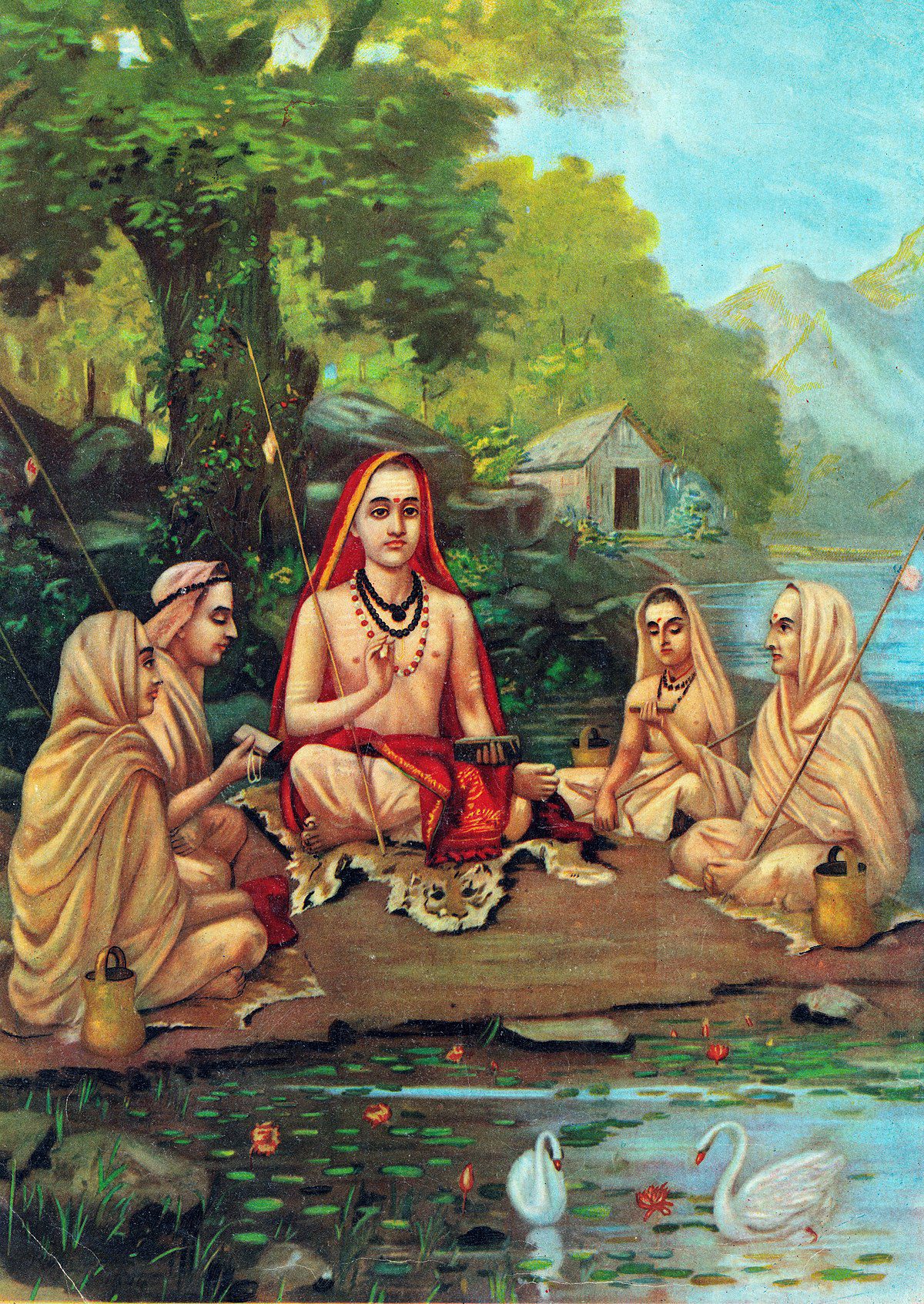
Since you mentioned Adi Shankara, my mind goes back to him. He said, “I sincerely apologise to you God, because I tried to put you in a name or a place or an activity, and I thought that’s you, whereas you remained beyond all this.”
We can’t contain God in a form, God is also in form; a part of us is the God element, the soul element, and it is in every name! “Rama” name is very powerful because it represents the Supreme Consciousness. That path is also enough to reach the Supreme Consciousness. Lord Krishna is Supreme Consciousness. Every being we can connect to, for the sake of aligning our mind and senses on one object, in order to penetrate into the vast Consciousness is fine.
We can understand and assimilate ourselves with a Guru or without a Guru by connecting to our inner Guru, which is our constant companion; external Gurus exist only when you connect or when you are awake, but the inner Guru is always there; you start listening to the inner Guru more and more; that is the story of Atmananda.
He was only listening to himself, within, and that says, “I need nothing! All these sensory pleasures, all the possessions, positions, and relations, are connected to the external world, and I have nothing to do with it, and even if you are connecting to all this, that’s me. You are connecting to me, outside of you.”
Our own projection is bringing forth a similar experience, and that’s what we are connecting to. Sometimes we accept, sometimes we reject, that’s the drama we play in society; sometimes we love, sometimes we hate; this drama is played because that is the only way you can experience duality. And when we separate this love and hate, and everything is gone, you only see love because love doesn’t need any provocation; Love is existing already, but hate has to be created through resistance.

So, we come to a state of complete stillness after a while, and then we realize the drama we are playing in this world. We are struggling to keep a name, our form, and we are addicted to this form. The main reason we can’t connect to the actual reality within, is because we are so addicted to the form that we see in the mirror, our position in society and whether society has accepted or rejected us. Our identification in this incarnation is delaying the process of actual connection.
These meditations, these practices that we do, we can choose anything we like; we can connect to the breath, we can connect to heartbeat, we can connect to any practice – but the aim should be not the practice but to recognise our true potential within us. Once you really recognise it, we understand everything is really us; it is our projection, a part of me is sitting in others as well; there is no separation, we can’t hate anybody; we become full of love; that’s what we are.
Traditions of Masters
Question 6: What is that tradition? With time, different people come, and they open new gates and windows for human beings; can you elaborate?
Mohanji: The tradition of Adi Shankara, we can call it Advaita – non-duality. Non-duality is our original state.
In the case of Atmananda, we talk about acceptance; his main practice was acceptance. We all are a bundle of pluses and minuses, positives and negatives. Nobody is only positive, and nobody is only negative. We are a broad mixture of all these things; we have to accept them; only then can we overcome them. Our main practice as we move on the path of Avadhoota is total acceptance. Through acceptance, you don’t have a conflict with yourself; then, you don’t have a conflict with the world, no conflict with situations, no conflict with anything!
There are many great paths in our great Land Bharat. Our main strength has been our total acceptance of every person as he or she is. This has been exploited as well nevertheless; we never said that if you are in this frame, we accept you; if you are not in this frame, we reject you. We have numerous types and states of people like Yogis, Siddhas, Avadhootas – people existing in numerous states, and everybody was accepted.
Look at the Dattatreya tradition, with very powerful Masters. Lord Dattatreya is the Supreme Avadhoota. When he was asked, “Who are you?” he said, “I am just a worshipper of Nature.” He had 24 Gurus, and many of them were from nature. That means observe, accept, assimilate and be yourself. It is simple; from there, you attain great power, great stability, nothing shakes you, no storms of life can shake you, you are supremely powerful.
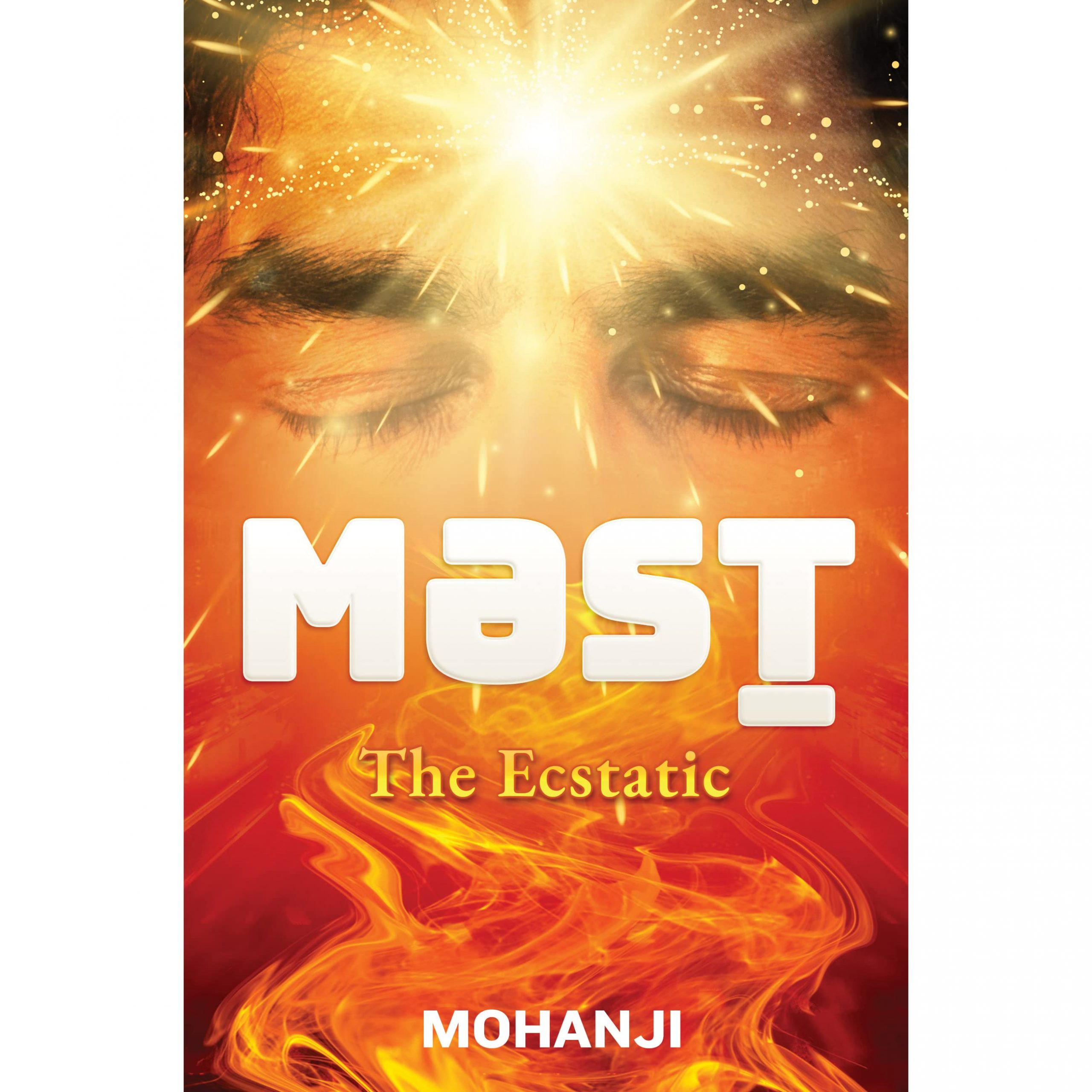
Many times people attack those who are seemingly harmless. We see in society that those who are harmless and those who are benevolent are attacked more than those who are cunning or political.
A person like Lord Datta or an Avadhoota, is more of a presence, and you can catch that presence everywhere; there is no way that we can miss the presence, if we have the eyes to see.
Great Masters looked like nothing, but they were supremely powerful – we accepted them. Sometimes they looked like mad people, but we accepted them as they were. For example, Sai Baba was considered as being mad by many people; but now, after 100 years of leaving his physical form, we know that he is supremely powerful! We have various such great and powerful Masters!
We have the Siddha tradition, with great Siddhas – 18 Siddhas, Boganathar, Babaji and others; the Kriya Tradition with Babaji and other great Masters (Kriya is actually a technique – so those who belonged to that tradition), the Nath tradition, which is codified based on the state of Shiva, a Supreme Bliss state, ecstatic state, again a MƏST state.
All the Nath gurus are Siddhas, but you can see many expressions of the Nath in the society; they have come forth and delivered to people or detached themselves and supported people energetically. Then we have the tradition of Avadhootas, the Lord Dattatreya tradition. So, there are numerous paths to reach the same goal, the same ocean. Their aim is to tell you who you really are; by connecting to yourself with conviction, you attain a state where you only see unity in everything.
The same holds true with Adi Shankara. He said Advaita, where there is no duality; in everything you see, you see unity in Action; that means zero doership. I am not doing anything; things are happening through me. That is what Lord Krishna also said, “Surrender all that you do to me. Then, I can release you from its Karma; that means no doership, no Karma- very simple! But since we have a variety of methods, many Puranas, Shruthis, Smrithis, Vedas, Upanishads, people get confused.
There are too many things, and we have 330 million Gods; sometimes, it is confusing. But if you look at the unity aspect, you will realise that all these 330 million Gods are aspects of ourselves and what we essentially are. That is the frequency we can connect to. So, all of us have our frequency, and when we say we like that person or that he or she is my type, it only means we are connecting to that frequency which is suitable to us.
All our connections and the journey within is all that we have acquired; what we have come with and what we have developed. That is exactly why we have Bhakti- devotion path, Gyana- knowledge path, Karma Yoga- selfless action path, and Raja yoga- the Supreme Consciousness path.
All these paths are because there are many types of people, and everybody can attain Supreme Consciousness by using the path that suits them.
This kind of variety is the gift of Bharat to the world.

What is the right path for us?
Question 7: I agree, and this variety offers us choices. Which then makes one wonder which is a better choice? What is the path for us to experience Supreme Consciousness?
Mohanji: Simple, Mr. Jodha, whatever suits you or makes you feel good. The path cannot be suggested by anybody from outside and should not be too, because that is the free will our great Bharat has given to the world.
You can choose to connect to complete material existence without regret or connect to complete spiritual existence without regret. Both options and everything in between are available to help us.
What is the right path for us?
It is the one that makes us feel aligned.
For some people, devotion is very easy and very enjoyable, and they can choose that path. In the Bhakti path, you can surrender to your Lord, dissolve into the Lord, and become the Lord, the one you are worshipping.
Similarly, through the Gyana path, you accumulate knowledge and try to understand what this is all about, understand Consciousness and then assimilate all the knowledge, digest it, eliminate whatever is not that Consciousness, and dissolve.
In the selfless path, the purification path, when you don’t own things, you are free. Ownership is binding; as you own more and more, you become more bound, and it becomes difficult to detach from it.
Then the Rajayoga path, the Supreme Consciousness path, pure brightness, there are no forms attached, you see your soul, you connect to your soul.
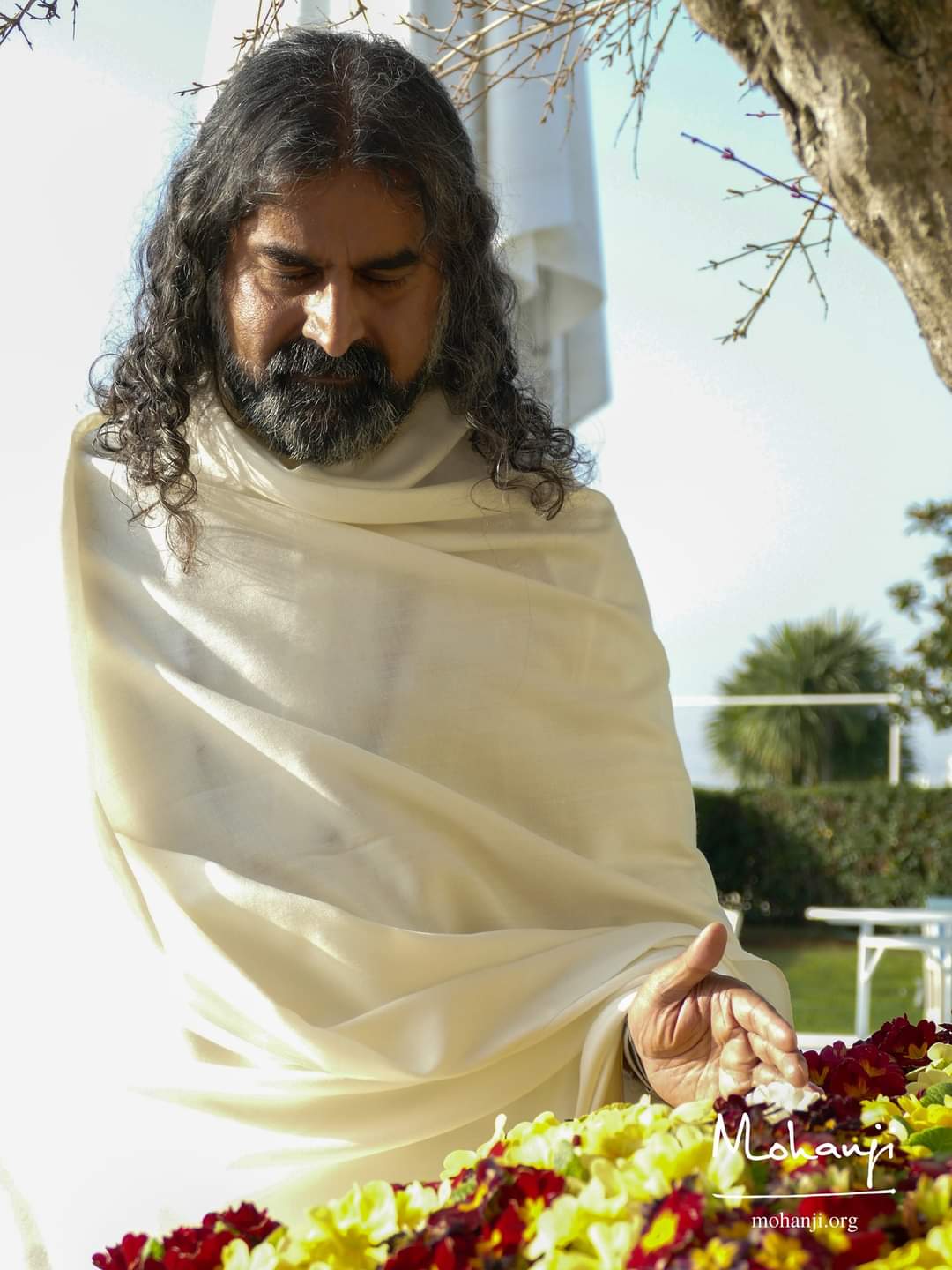
There is nothing to choose here. When you feel aligned when you do an activity, that activity suits you. When you wear an outfit, what feels good is what suits you; when the size is correct, you feel good about it. Similarly (what suits you is) when you feel good about a path, the Guru Frequency or the external Guru frequency.
There are numerous Masters who have attained Supreme Consciousness, who have found the Truth, but we can’t follow everybody. There are so many religions, so many paths, so many systems; we can’t follow everybody, and we don’t have to. But we can connect to somebody whom you feel really connected with; who you resonate with, you are able to understand the energy, and that’s enough; then look no further.
That’s what Yogananda also said, “If you consider me your Guru, then I am all gurus, look no further!” That is exactly what the whole system is talking about – you can focus on one and then go deeper and deeper and deeper and then dissolve.
A Story
I’ll give you a small story that actually happened. There was a great scholar, and there was a totally illiterate man looking after this scholar, so whenever the scholar went around, he would take the illiterate man to help him. The man listened to his speeches in various places, and one day, this illiterate man asked,” Master, wherever you go, you are talking about Supreme Consciousness, what is this Supreme Consciousness?”
The scholar wondered how he would explain this to the illiterate man, and so he said, “Can you see the buffalo there? That’s Supreme Consciousness.” The man thought it was true because he didn’t understand that the Master was joking. A few years passed by, and they were going through a small alley. The Master passed through, but the man got stuck. The Master asked him why he was not coming. The man replied, ” The Supreme Consciousness cannot come with me through this alley because this alley is too small.”
Then the Master wondered what Supreme Consciousness he was talking about! The man then said, ”Master, please touch me and look.” When the Master did, indeed, he saw a huge buffalo! And that big buffalo could not fit into that small pathway! The Master then understood what the man had been doing; he was practicing/concentrating single-pointedly on the buffalo and materialised him! Supreme Consciousness in the form of a buffalo connected to him. It is that simple; if you have single-pointed faith and belief, and connection, you have that effect.
Mr. Jodha: We will talk about this in the future! I would like to thank you, your team, and hopefully, we will also try to find the vast ocean of consciousness, and I wish the same for the audience. Thank you, Mohanji, for joining us.
Mohanji: Thank you. I wish you great success.
Transcribed by Sanya Garewal
Proofread by Vidya Rajagopalan

